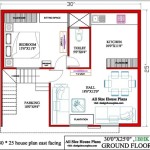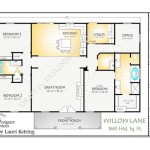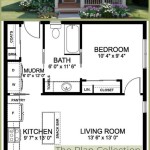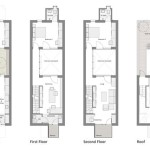Designing a floor plan for a house involves creating a comprehensive layout that outlines the arrangement of rooms, spaces, and structural elements within a building. It serves as a blueprint for the construction and organization of the living space, ensuring its functionality, efficiency, and aesthetic appeal.
Floor plans are essential for architects, builders, and homeowners alike. They provide a visual representation of the spatial relationships between different areas of the house, allowing for informed decision-making regarding room sizes, flow of movement, and the placement of windows, doors, and other architectural features.
In the following sections, we will delve into the key considerations, steps, and best practices involved in designing an effective floor plan for a house, empowering you with the knowledge and insights to create a functional, comfortable, and visually pleasing living space.
When designing a floor plan for a house, there are several important points to consider:
- Define room sizes
- Consider traffic flow
- Maximize natural light
- Plan for storage
- Incorporate outdoor space
- Consider accessibility
- Allow for future expansion
- Follow building codes
- Get professional help
By keeping these points in mind, you can create a floor plan that meets your needs and creates a comfortable, functional, and visually appealing living space.
Define room sizes
Determining the appropriate size for each room in your house is a crucial step in the floor planning process. The size of a room will impact its functionality, comfort, and overall aesthetic appeal. Here are some key factors to consider when defining room sizes:
Function: The primary function of a room should dictate its size. For example, a living room should be large enough to accommodate seating for guests and allow for comfortable movement, while a bedroom should be large enough to fit a bed, dresser, and other necessary furniture. Consider the activities that will take place in each room and plan accordingly.
Furniture: The size and quantity of furniture you plan to place in a room will also influence its size. Measure your furniture or estimate the dimensions of similar pieces to ensure that there is adequate space for movement and circulation. Avoid overcrowding rooms with too much furniture, as this can make them feel cramped and uncomfortable.
Traffic flow: Pay attention to the flow of traffic between rooms. Rooms should be sized in a way that allows for easy movement without creating bottlenecks or obstructions. Consider the placement of doors, windows, and other architectural features that may affect traffic flow.
Natural light: The amount of natural light a room receives can impact its perceived size and ambiance. Plan room sizes with adequate windows or other sources of natural light to create a and inviting space. Smaller rooms may require larger windows to compensate for their limited size.
Overall balance: Strive for a balanced and harmonious relationship between the sizes of different rooms. Avoid creating rooms that are disproportionately large or small compared to others. A well-balanced floor plan will create a sense of flow and unity throughout the house.
By carefully considering these factors, you can define room sizes that optimize functionality, comfort, and aesthetic appeal, creating a house that is both practical and enjoyable to live in.
Consider traffic flow
Traffic flow refers to the movement of people through a space. When designing a floor plan, it is important to consider how people will move through the house and between different rooms. Good traffic flow will create a smooth and efficient living space, while poor traffic flow can lead to congestion, frustration, and accidents.
- Create a central circulation space: A central circulation space, such as a hallway or foyer, can help to organize traffic flow and provide easy access to different areas of the house. This space should be and well-lit, and it should not be cluttered with furniture or other obstacles.
- Use clear and direct pathways: Pathways should be clear and direct, without any unnecessary turns or obstacles. Avoid creating dead-end spaces or narrow passages that can cause congestion. Ensure that there is adequate space for people to move around comfortably, even when carrying objects.
- Separate public and private spaces: Public spaces, such as the living room and dining room, should be easily accessible from the central circulation space. Private spaces, such as bedrooms and bathrooms, can be located in more secluded areas of the house. This separation will help to create a more peaceful and relaxing environment in private areas.
- Consider the flow of traffic during different activities: Think about how people will move through the house during different activities, such as cooking, entertaining, or getting ready for work. Plan the floor plan so that these activities can be carried out smoothly and efficiently, without creating conflicts or bottlenecks.
By considering traffic flow when designing your floor plan, you can create a house that is both functional and enjoyable to live in.
Maximize natural light
Natural light has a profound impact on the ambiance, comfort, and overall well-being of a living space. When designing a floor plan, it is essential to consider how to maximize natural light throughout the house. Here are some key strategies to achieve this:
Orient the house towards the sun: The orientation of the house on the building lot is crucial for maximizing natural light. In the Northern Hemisphere, south-facing windows will receive the most sunlight, while in the Southern Hemisphere, north-facing windows will be more effective. Consider the sun’s path throughout the day and position the main living areas, such as the living room, dining room, and kitchen, to take advantage of natural light.
Use large windows and doors: Large windows and doors allow more natural light to enter the house. Consider using floor-to-ceiling windows in main living areas to create a bright and airy atmosphere. Sliding glass doors leading to patios or decks can also provide ample natural light while connecting the indoor and outdoor spaces.
Place windows strategically: The placement of windows is just as important as their size. Avoid placing windows too high on walls, as this will limit the amount of natural light that enters the room. Instead, position windows at eye level or slightly lower to allow for maximum light penetration. Consider using clerestory windows or skylights to bring natural light into interior spaces that may not have access to exterior walls.
Minimize obstructions: Obstructions such as trees, shrubs, and fences can block natural light from entering the house. When planning the landscaping, consider the placement of these elements to ensure that they do not cast shadows on windows or doors. Deciduous trees that lose their leaves in the winter can be strategically placed to allow sunlight to enter during the colder months.
By incorporating these strategies into your floor plan, you can create a house that is filled with natural light, making it a more inviting, comfortable, and healthy living space.
Plan for storage
Adequate storage is essential for maintaining a well-organized and clutter-free home. When designing a floor plan, it is important to incorporate ample storage solutions to accommodate the belongings of the occupants. Here are some key considerations for planning for storage:
Identify storage needs: The first step is to identify the storage needs of the occupants. Consider the types of items that need to be stored, such as clothing, books, household supplies, and seasonal items. Determine the approximate volume and size of these items to estimate the amount of storage space required.
Maximize vertical space: Vertical space is often underutilized in floor plans. Consider using tall shelves, cabinets, and drawers to maximize storage capacity. Stackable bins and baskets can also be used to create vertical storage solutions in closets, pantries, and other areas.
Incorporate hidden storage: Hidden storage solutions can help to keep clutter out of sight and maintain a clean and organized appearance. Built-in shelves, drawers, and compartments can be integrated into walls, under stairs, and in other unused spaces to provide additional storage without taking up valuable floor space.
Create multipurpose spaces: Multipurpose spaces can serve multiple functions and provide additional storage opportunities. For example, a guest room can also be used as a home office or a playroom, with built-in storage solutions to accommodate different uses. Ottomans with built-in storage can provide extra seating and a place to store blankets, pillows, or other items.
By carefully planning for storage, you can create a house that is both functional and aesthetically pleasing, providing ample space for belongings without sacrificing style or comfort.
Incorporate outdoor space
Incorporating outdoor space into the design of a house can greatly enhance the livability, comfort, and overall enjoyment of the home. By seamlessly connecting indoor and outdoor areas, homeowners can create a more spacious and inviting living environment.
- Extend living areas outdoors: Patios, decks, and porches extend the living space outdoors, providing additional areas for relaxation, dining, and entertaining. These outdoor extensions can be designed to complement the architectural style of the house and create a cohesive indoor-outdoor flow.
- Create outdoor rooms: Outdoor rooms are defined spaces within the outdoor area that serve specific purposes, such as dining, lounging, or gardening. These spaces can be created using pergolas, trellises, or other structures to define the area and provide shade or shelter from the elements.
- Maximize natural light and ventilation: Large windows and doors that lead to outdoor spaces allow natural light to penetrate deeper into the house, creating a brighter and more inviting atmosphere. Open floor plans and high ceilings can further enhance natural ventilation, reducing the need for artificial lighting and cooling.
- Enhance curb appeal: A well-designed outdoor space can significantly enhance the curb appeal of a house. Landscaping, hardscaping, and outdoor lighting can be used to create a visually appealing and welcoming exterior that complements the architectural style of the house and the surrounding environment.
By incorporating outdoor space into the floor plan, homeowners can create a more functional, comfortable, and aesthetically pleasing living environment that seamlessly blends indoor and outdoor living.
Consider accessibility
Accessibility is an important consideration in floor plan design, ensuring that the house is safe, comfortable, and easy to navigate for people of all ages and abilities. Here are some key points to consider:
Provide accessible entrances: All entrances to the house should be accessible to people with disabilities. This includes providing ramps or elevators for wheelchair users, and ensuring that doorways are wide enough for wheelchairs to pass through.
Create accessible pathways: All pathways within the house, both indoors and outdoors, should be accessible to people with disabilities. This means avoiding steps or other obstacles that could make it difficult for people to move around.
Install accessible fixtures: Fixtures such as sinks, toilets, and countertops should be installed at accessible heights for people with disabilities. Grab bars and other safety features can also be installed to make these fixtures easier to use.
Consider future needs: When designing a floor plan, it is important to consider the future needs of the occupants. This may include the need for accessible features as people age or develop disabilities.
By considering accessibility in the floor plan design, you can create a house that is safe, comfortable, and easy to navigate for everyone.
Allow for future expansion
When designing a floor plan, it is important to consider the possibility of future expansion. This may include adding on to the house, such as an additional bedroom or bathroom, or simply reconfiguring the existing space to better suit your needs. By planning for future expansion, you can avoid costly renovations or additions down the road.
There are several ways to allow for future expansion in your floor plan. One way is to create a flexible space that can be easily adapted to different uses. For example, a large bonus room could be used as a playroom for children, a home office, or a guest room. Another way to allow for future expansion is to include unfinished space in your floor plan. This space can be finished later on as your needs change.
If you are planning to add on to your house in the future, it is important to consider the location of the addition and how it will connect to the existing house. You should also make sure that the foundation and framing of the house are strong enough to support the addition.
By planning for future expansion, you can create a house that is flexible and adaptable to your changing needs. This will save you time and money in the long run, and it will ensure that your house continues to meet your needs for years to come.
Here are some additional tips for allowing for future expansion in your floor plan:
- Use modular construction methods, which make it easier to add on to the house later on.
- Choose a floor plan that has a simple and straightforward layout, which will make it easier to reconfigure the space in the future.
- Avoid using load-bearing walls in your floor plan, as these walls cannot be removed without compromising the structural integrity of the house.
- Install plumbing and electrical lines in a way that makes it easy to add on to the house in the future.
Follow building codes
Building codes are regulations that govern the construction and design of buildings. These codes are in place to ensure the safety and structural integrity of buildings, as well as to promote energy efficiency and accessibility. When designing a floor plan for a house, it is important to follow all applicable building codes.
- Zoning codes: Zoning codes regulate the use of land and buildings in a particular area. These codes determine what types of buildings can be built in a specific zone and the maximum height and size of buildings. It is important to check with your local zoning authority to determine the zoning code for your property before you begin designing your floor plan.
- Building codes: Building codes ensure the structural integrity and safety of buildings. These codes specify the minimum requirements for building materials, construction methods, and fire safety. Building codes also regulate the size and placement of windows, doors, and other openings in the building envelope.
- Energy codes: Energy codes promote energy efficiency in buildings. These codes set minimum standards for the energy performance of building envelopes, heating and cooling systems, and appliances. By following energy codes, you can reduce the energy consumption of your home and save money on your energy bills.
- Accessibility codes: Accessibility codes ensure that buildings are accessible to people with disabilities. These codes specify the minimum requirements for ramps, elevators, doorways, and other features that make buildings accessible to people with mobility impairments.
Following building codes is essential for ensuring the safety, structural integrity, energy efficiency, and accessibility of your home. By working with a qualified architect or builder, you can design a floor plan that meets all applicable building codes.
Get professional help
Designing a floor plan for a house is a complex task that requires knowledge of building codes, construction methods, and design principles. If you are not experienced in floor plan design, it is advisable to seek professional help from an architect or builder.
Architects are licensed professionals who are trained in the design and construction of buildings. They can provide a wide range of services, including:
- Developing a floor plan that meets your specific needs and requirements
- Creating detailed construction drawings that can be used by builders
- Supervising the construction process to ensure that the house is built according to the plans
Builders are skilled tradespeople who are responsible for the construction of buildings. They can provide a range of services, including:
- Building the house according to the plans provided by the architect
- Installing all of the necessary electrical, plumbing, and mechanical systems
- Finishing the house to your specifications
There are many benefits to working with a professional when designing a floor plan for a house. These benefits include:
- Ensuring that your house is designed and built to meet all applicable building codes
- Having access to the expertise and experience of a professional
- Saving time and money in the long run
If you are planning to build a new house, it is important to invest in professional help. A qualified architect or builder can help you to create a beautiful and functional home that meets your specific needs and requirements.









Related Posts








